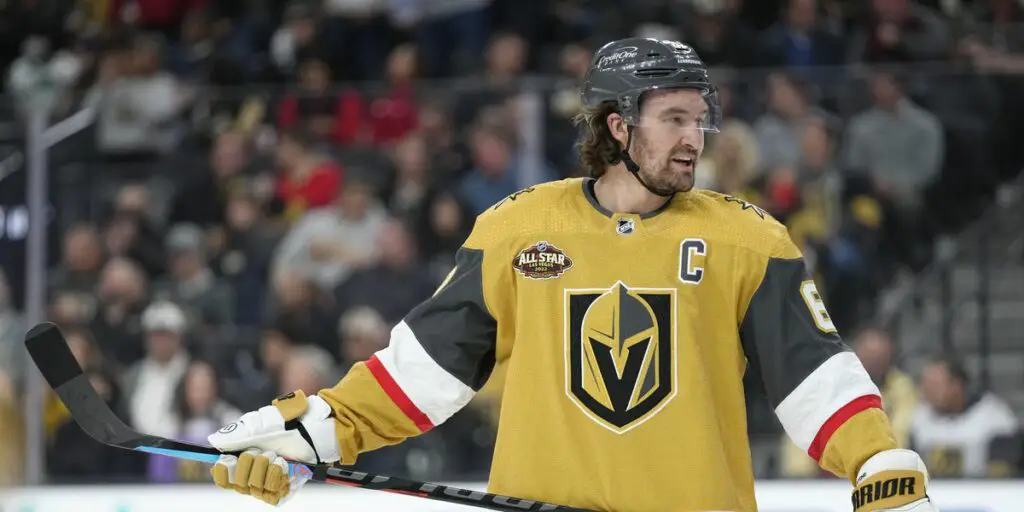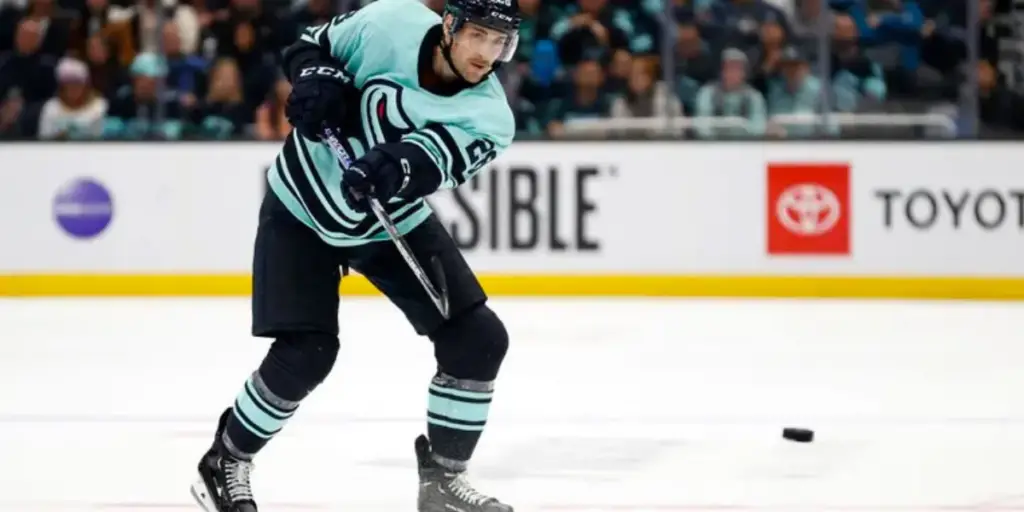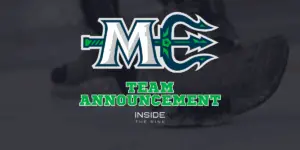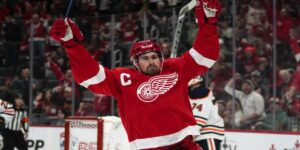
As the NHL 22-23 season comes to a close, the Vegas Golden Knights looked dominant in their first-ever Stanley Cup win. This feat is made all the more impressive as they are the fastest expansion franchise to win a Championship across all major North American sports since the Arizona Diamondbacks won the World Series in 2001. They also did this in 32 team league. When we think of other expansion teams that had early success in the NHL, like the Philadelphia Flyers, it’s important to note that they only had 11 other teams to compete with league-wide. So with all of this success so immediate and so consistent, what can the latest expansion team, the Seattle Kraken, learn from the short history of the Golden Knights?

The Marketing
There’s one thing no one can deny when it comes to Vegas, and that is branding. The Golden Knights knew how to sell the game from the beginning. They bleed Las Vegas all over everything, from their flashy (some could say tacky) gold jerseys with white gloves to their Medieval Times Dinner and Tournament-esque pregames show to the unnecessarily loud PA system in the T-Mobile arena. They are Vegas. This ability to market their brand not only helped them cultivate pride in the locals but also helped to draw in the tourists with an over-the-top Vegas vibe show. Now some will say, “marketing has nothing to do with the on-ice product,” but that assertion is misplaced. If you successfully sell the game the way they do, you buy time with your fan base and have the profitability to take chances, which ties into the other major factor.
Aggression in the Trade Market
The Golden Knights Stanley Cup-winning team is a team built through trades. This goes back to the expansion draft. The hockey media’s narrative of “The Golden Misfits” is a nice thought and harkens back to other successful expansion teams’ Bad News Bears-esque underdog status. But the updated expansion rules were designed for them to make an immediate impact, and unlike the Kraken would experience a few years later, the other GMs in the league weren’t ready with a game plan to protect their assets. They not only had a group of great players left exposed to them but utilized cap space and bad contracts to extort specific players away from teams. Combine this with 6 years of very aggressive trades and player management; yes, there are only six players from the inaugural team, but the original six were hardly cast away. Just ask Anaheim Ducks fans how they feel about Shea Theodore.
The Golden Knights front office continued this strategy into trades and free agency. Some blend of big swing chances on depreciated star players, outbidding the competition in free agency, weaponizing their virtually non-existing but seemingly never-ending cap space, and creating a winning-focused atmosphere has pulled star players from all over the league into their orbit. How many former Captains and Alternate Captains are scattered all over their roster? Jack Eichel, Alex Pietrangelo, Phil Kessel, and the list goes on. They were built with reckless abandon to be as successful as they are.

What the Kraken Should Avoid
As a by-product of the success, aggressive trades, and player management, the Golden Knights have a bottom-ranked Prospect pool. They have always had success, which deprived them of high draft picks, and their being continually in “Win Now” mode has seen them move a lot of young prospects for sure-fire current players. This strategy will only work for so long. Ask any of the teams that were dominant throughout the last decade; all teams that pay to play and try to extend their competitive window eventually find themselves on the wrong side of the cap space-to-player production ratio. That very same aggression that built the Golden Knights to win over the last six years will be the thing that closes the window, and it didn’t necessarily need to be that way. Being patient, especially after their first season was so successful, would have afforded them time to draft better and develop more which is essential to long-term sustainable success.
Public perceptions – there is no doubt Vegas loves the Golden Knights. There is no doubt that the NHL loves the Golden Knights. Where it gets spotty is everybody else. The Knights and how they are run as an organization are probably the most criticized in the league, save maybe for the Toronto Maple Leafs, whether it’s them circumventing the Salary Cap or the treatment of Star Players from across the league. They have not ingratiated themselves with fans of other markets. While that is not necessary for immediate success, it is needed for the long-term health of not just the team but the league as a whole. The NHL is financially buoyed by ticket and merchandise sales. If the on-ice product takes a step back, the merchandise becomes all the more important, and not being hated by the other 31 fan bases helps with that.

Where the Kraken Are and Where They Could Be
So far, the Kraken have decided to walk their own path for their first 2 seasons. At the expansion draft, it become clear that the league had learned its lesson from the Golden Knights. A lot of GMs spent years managing contracts and players specifically to avoid having to expose them. And the Kraken decided to be patient and focus on culture and development. Unlike the Golden Knights, they had the luxury of being in a traditional hockey market. Despite this being an expansion team, Washington State supports 4 of the 5 teams in the WHL’s U.S. Division and has the first American Stanley Cup win in 1917 with the short-lived Metropolitans. Their fans know how the sport works and have supported it even before the team was manifested. This has allowed them to be a bit more patient with being competitive.
The Seattle Kraken have taken cues for their branding and marketing from the Golden Knights and made an on-ice product uniquely Seattle. From the nautical pregame presentations and jersey logos and color schemes right down to the “yeeting” of a plushie salmon for the 3 stars at the end of a game. They even have a banner for the City’s 1917 Stanley Cup win. They know their market and are very good at selling their product to them, even if they have decided to take a more measured and long-term approach to building out the team.
Their drafting and development and patience for long-term sustained success have, at least in the immediate, proved fruitful. A breakout and probably Calder Trophy-winning year for their first-ever draft pick Matty Beniers. Their first playoff berth and subsequent success in the first round knocking out the defending Stanley Cup champs. Their AHL affiliate made it to the Calder Cup final and forced a game 7. They have proven they can succeed the way they want to succeed.
If they can continue their strong start in their first two years with marketing and development and mix in some of the aggressive trades and other off-season moves that built the Golden Knights championship team while avoiding the pitfalls of negative fan perception, there is no reason to think they have anywhere to go but up. Though the Kraken undoubtedly were set back by the league’s learning experience with the Golden Knight expansion draft, they certainly have the benefit of being able to avoid making the same mistakes that might end up costing Vegas long-term sustainable success. At least initially, they seem to indicate that not all that glitters is gold.
Discover more from Inside The Rink
Subscribe to get the latest posts sent to your email.



